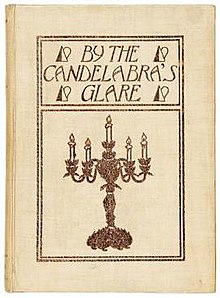
Lyman Frank Baum was an American author best known for his children's books, particularly The Wonderful Wizard of Oz and its sequels. He wrote 14 novels in the Oz series, plus 41 other novels, 83 short stories, over 200 poems, and at least 42 scripts. He made numerous attempts to bring his works to the stage and screen; the 1939 adaptation of the first Oz book became a landmark of 20th-century cinema.

The Wonderful Wizard of Oz is an American children's novel written by author L. Frank Baum and illustrated by W.W. Denslow, originally published by the George M. Hill Company in May 1900. It has since seen several reprints, most often under the title The Wizard of Oz, which is the title of the popular 1902 Broadway musical adaptation as well as the iconic 1939 live-action film.
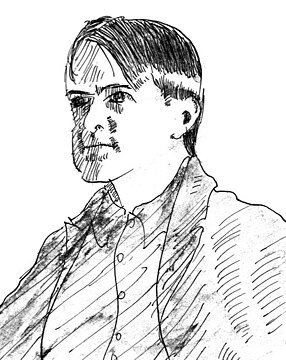
John Rea Neill was a magazine and children's book illustrator primarily known for illustrating more than forty stories set in the Land of Oz, including L. Frank Baum's, Ruth Plumly Thompson's, and three of his own. His pen-and-ink drawings have become identified almost exclusively with the Oz series. He did a great deal of magazine and newspaper illustration work which is not as well known today.

William Wallace Denslow, professionally W. W. Denslow, was an American illustrator and caricaturist remembered for his work in collaboration with author L. Frank Baum, especially his illustrations of The Wonderful Wizard of Oz. Denslow was an editorial cartoonist with a strong interest in politics, which has fueled political interpretations of The Wonderful Wizard of Oz.

Mother Goose in Prose is a collection of twenty-two children's stories based on Mother Goose nursery rhymes. It was the first children's book written by L. Frank Baum, and the first book illustrated by Maxfield Parrish. It was originally published in 1897 by Way and Williams of Chicago, and re-released by the George M. Hill Company in 1901.
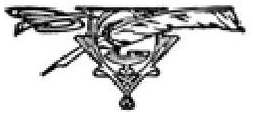
The Reilly and Britton Company, or Reilly & Britton was an American publishing company of the early and middle 20th century, famous as the publisher of the works of L. Frank Baum.

American Fairy Tales is the title of a collection of twelve fantasy stories by L. Frank Baum, published in 1901 by the George M. Hill Company, the firm that issued The Wonderful Wizard of Oz the previous year. The cover, title page, and page borders were designed by Ralph Fletcher Seymour; each story was furnished with two full-page black-and-white illustrations, by either Harry Kennedy, Ike Morgan, or Norman P. Hall.

Policeman Bluejay or Babes in Birdland is a children's novel written by L. Frank Baum and illustrated by Maginel Wright Enright. First published in 1907, Jack Snow considered it one of the best of Baum's works.
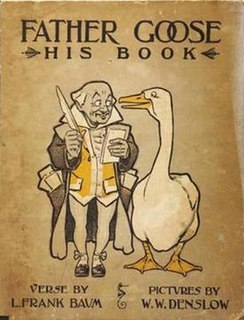
Father Goose: His Book is a collection of nonsense poetry for children, written by L. Frank Baum and illustrated by W. W. Denslow, and first published in 1899. Though generally neglected a century later, the book was a groundbreaking sensation in its own era; "once America's best-selling children's book and L. Frank Baum's first success," Father Goose laid a foundation for the writing career that soon led to The Wonderful Wizard of Oz and all of Baum's later work.

Father Goose's Year Book: Quaint Quacks and Feathered Shafts for Mature Children is a collection of humorous nonsense poetry written by L. Frank Baum, author of the Oz books. It was published in 1907.

L. Frank Baum's Juvenile Speaker: Readings and Recitations in Prose and Verse, Humorous and Otherwise is an anthology of literary works by L. Frank Baum, author of the Oz books. The book was first published in 1910, with illustrations by veteran Baum artists John R. Neill and Maginel Wright Enright; a subsequent 1912 edition was retitled Baum's Own Book for Children. The book constitutes a complex element in the Baum bibliography.
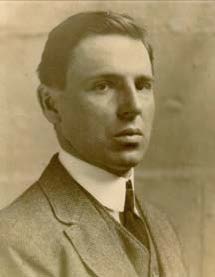
Ralph Fletcher Seymour was an American artist, author, and publisher of the late nineteenth and the twentieth centuries. Though long based in Chicago, he was also noted for his work in the American Southwest; he studied, wrote about, and portrayed the Native American cultures of the region.
Paul Tietjens was an American composer of the early twentieth century. He is best known for composing music for The Wizard of Oz, the 1902 stage adaptation of L. Frank Baum's The Wonderful Wizard of Oz, one of the great popular hits of its era.

Little Wizard Stories of Oz is a set of six short stories written for young children by L. Frank Baum, the creator of the Oz books. The six tales were published in separate small booklets, "Oz books in miniature," in 1913, and then in a collected edition in 1914 with illustrations by John R. Neill. Each booklet is 29 pages long, and printed in blue ink rather than black.
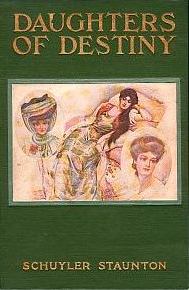
Daughters of Destiny is a 1906 adventure novel written by L. Frank Baum, famous as the author of the Oz books. Baum published the novel under the pen name "Schuyler Staunton," one of his several pseudonyms.

The Woggle-Bug Book is a 1905 children's book, written by L. Frank Baum, creator of the Land of Oz, and illustrated by Ike Morgan. It has long been one of the rarest items in the Baum bibliography. Baum's text has been controversial for its use of ethnic humor stereotypes.

Maud Gage Baum was the wife of American children's publisher L. Frank Baum. Her mother was the suffragist Matilda Joslyn Gage. In her early life, she attended a boys' high school.

George M. Hill Company was an American publishing company based in Chicago, Illinois. It was founded in 1893 by George M. Hill, who learned the book-binding trade through an apprenticeship.
The plays of L. Frank Baum are an important aspect of Baum's writing career about which some of the least is known. While even most brief biographies, long before the Internet, have noted Baum's work as a playwright, these works have been rarely performed beyond his lifetime, and almost none have been published aside from two scenarios and a first act of three unfinished works in The Musical Fantasies of L. Frank Baum, compiled with an introduction by Alla T. Ford. Aside from his youthful success with The Maid of Arran, his blockbuster eight-year run with The Wizard of Oz, his failure with The Woggle-Bug, and The Tik-Tok Man of Oz as source material for his novel, Tik-Tok of Oz, very little is known about his dramatic output, and mostly from the publications of Michael Patrick Hearn, Susan Ferrara, and Katharine M. Rogers. Hearn identifies 41 different titles in the bibliography of the 2000 edition of The Annotated Wizard of Oz, plus one play without a title, although some of these titles clearly refer to drafts of the same play, such as the early titles of The Tik-Tok Man of Oz.
This is a complete bibliography for American children's writer L. Frank Baum.
